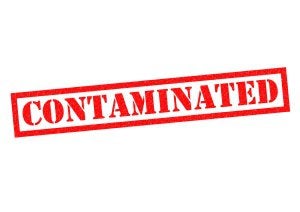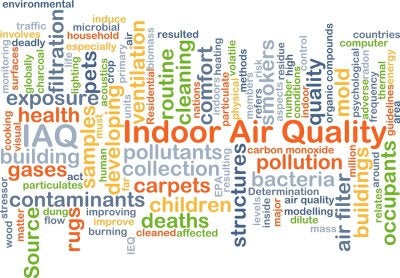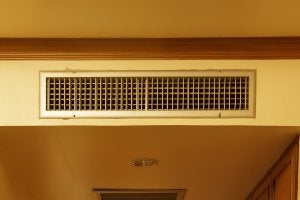-
Exploring the Contaminant Testing Process
Whether you are buying a new house, planning a home renovation, or want to improve the comfort of your home, testing a house’s indoor air quality in San Francisco is a smart decision. These thorough evaluations can alert you to problems that affect the safety of the building’s air, allowing you to address any issues as needed.
When a house is tested for contaminants such as asbestos, lead, and mold, the process usually involves several steps. First, an experienced team arrives at the home and conducts an extensive inspection, during which the members will search for any areas that could harbor contaminants that might affect the house’s indoor air quality.
After evaluating all areas of the building, the team will carefully obtain samples of any suspect materials. Next, the samples are sent to a lab for testing and identification. Finally, the testing company will report the findings to you and discuss any recommended treatment or abatement services to improve the home’s indoor air quality.

-
Reasons to Talk to Your New Construction Contractor About Air Quality Testing
When planning a home renovation near San Francisco, you have a lot to consider regarding the project’s design. In addition to dimensions, layout, and style, the effect of the remodel on your indoor air quality , or IAQ, should be factored into your decisions. During new construction, there are several reasons why you should talk to your contractor about your home’s air quality.
To Make the Most of Your Home Remodel

Whether your house is new or old, there may be existing materials that are affecting your family’s health. If it is poor, the quality of your indoor air can cause allergic reactions, discomfort, and even illness for anyone residing in the home. A renovation, however, gives you the ideal opportunity to address the construction of your home in a way that improves your IAQ. After having an air quality test performed, talk with your contractor about any areas you’d like to remove or repair to address any IAQ issues.
To Remove Unhealthy Materials from Your Home
Home remodeling gives you the chance to tear out or contain any dated, damaged, or unhealthy materials that may be affecting your IAQ. For older houses, lead and asbestos are common issues that homeowners face during a remodel. Also, bacteria, mold, and mildew can develop in both newer and older homes. Before you begin your renovation, schedule a professional IAQ evaluation for your home to identify any contaminants you are facing. Next, speak with your contractor about the best course of action regarding the removal of problematic construction materials and any need for lead or asbestos removal services.
To Choose Materials that Support Better Indoor Air
In addition to addressing any problematic materials in the construction area, the home remodel allows to you to replace these with new and better options. Today, there are products available that can resist the growth of bacteria, mold, and mildew to help protect your home’s IAQ. Also, the VOCs, or volatile organic compounds, found in some construction materials can release vapor into the air that lowers indoor air quality, so speak with your contractor about your low or no-VOC options.
-
Questions to Ask Your Real Estate Agent About Air Quality
Are you thinking of buying a house in San Francisco ? If so, then it’s vital that you consider the indoor air quality of a home before committing to purchase. Poor indoor air can affect your family’s comfort and health, and may also indicate a problem with the home. When considering a house, there are several questions that you should ask your real estate agent about the building’s indoor air quality:
What can you tell me about the air quality of this home?

Your real estate agent isn’t an expert in air quality or the factors that can affect it. However, she can help you find professionals who can evaluate the house to provide you with insight into its air quality. Before buying a house, checking the indoor air quality should be considered essential. A standard house inspection will not necessarily catch potential problems, so it’s ideal to schedule a dedicated air quality inspection.
Does this home contain any lead-based paint or asbestos?
When the materials in a home contain lead or asbestos, they tend to be benign as long as the structure of the material is in good condition and left undisturbed. However, it’s important to ask your realtor about these two substances. Even if neither is a deal breaker for you, it’s essential that you be aware of the presence of lead-based paint and asbestos so you can keep an eye on the state of the containing materials. Additionally, lead and asbestos can affect your ability to safely remodel your home.
Are there any signs of mold in this home?
Mold is a contaminant that is found in many homes. While it may not cause serious problems in small amounts, the presence of mold can indicate a water leak or water damage in the building. Additionally, when not dealt with, mold can grow into a significant issue that can affect the health of your family, as well as ruin your belongings and harm the structure of the home. Finding out if the home inspector spotted mold can help you make a better-informed decision when you buy your new house.
-
Do You Have Products in Your Home That Are Causing Pollution?
Do you have concerns about your San Francisco home’s indoor air quality? If so, then you may have more than mold and dust to worry about. Today, chemicals that contribute to the pollution of indoor air can be found in many items. Watch this video to learn more about products that could be affecting your indoor air quality .
Formaldehyde is an organic compound that is used in many products and is one of the more dangerous contributors to poor air quality in the home. Formaldehyde can be found in some cosmetics, hair products, and insulation materials. A second chemical to be aware of is perchloroethylene, which is used to dry clean clothing. Additionally, some cleaners, detergents, and paints are potential threats to indoor air quality.
To reduce your home’s levels of air pollution, choose non-toxic detergents and cleaning products, and keep plants indoors to assist with air filtration.
RECENT POSTS
categories
- Uncategorized
- Lead
- Mold
- San Francisco Mold & Asbestos Removal
- Indoor Air Pollution
- Mold Remediation
- Asbestos
- Safe Air Fast
- Mold Inspection
- Remediation
- Bacteria Testing
- Asbestos Testing
- Abatement
- Lead Testing
- Sewer Line
- Lead Survey
- Mold Testing
- Air Quality Inspection
- Home renovations
- Allergies
- Renovation Contractor
- Infographic
- lead paint
- Air Quality
- Air Quality Test
- Mold removal
